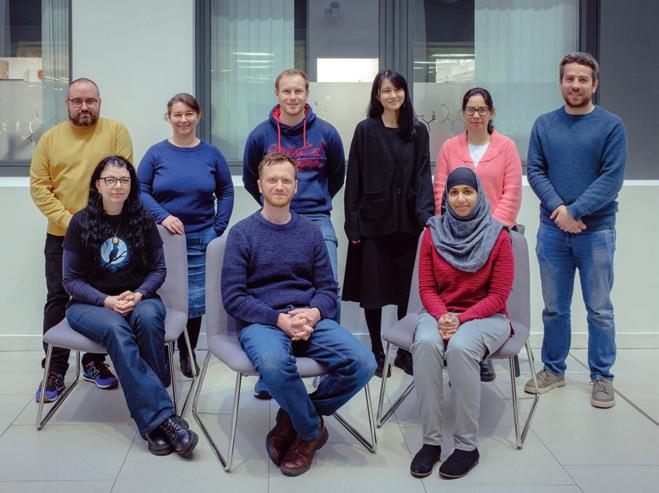
1 minute read
Effective drug discovery in a global pandemic
Shortly after COVID-19 lockdowns began in Scotland, the University of Dundee’s Division of Signal Transcription Therapy began expressing key proteins from the virus. In particular, the methyltransferase nsp14 from SARS-CoV-2 was identified as a potential anti-viral target. DDU scientists had been working on the mammalian version of this enzyme and were then able to apply their expertise to start the process of drug discovery with the goal of developing potential new medicines to treat COVID-19. This enzyme is key to the formation of the viral mRNA cap, which is important for the stability of the mRNA and in translation to form proteins. The nsp14 primary assay was developed using the RapidFire 400 Mass Spectrometry system and screening of large chemical libraries was started within a month of first obtaining the protein - a very fast turnaround in drug discovery. The assay was published (doi.org/10.1177/24725552211000652 and later our collaborators were able to solve X-ray crystal structures of nsp14 (doi.org/10.1016/j.str.2022.04.014) - giving insights into the molecular mechanisms of the virus and enabling a crystallographic platform. The DDU COVID team are making progress on developing novel leads for this target. The COVID team is part of a consortium called CARE (Corona Accelerated R&D in Europe, imi-care.eu), bringing together many strands of expertise. The lead series of nsp14 has progressed steadily since the pandemic and is currently in proof of concept animal experiments.

Advertisement
References
Pearson L-A, Green CJ, Lin D, et al. Development of a HighThroughput Screening Assay to Identify Inhibitors of the SARS-CoV-2 Guanine-N7-Methyltransferase Using RapidFire Mass Spectrometry. SLAS DISCOVERY: Advancing the Science of Drug Discovery, 2021 26 749-756.
Carna A, Plewka J, Kresik L. et al ‘Refolding of lid subdomain of SARS- CoV-nsp14 upon nsp 10 interaction releases exonuclease activity. Structure, 2022, 30, 1050-1054.E2.










